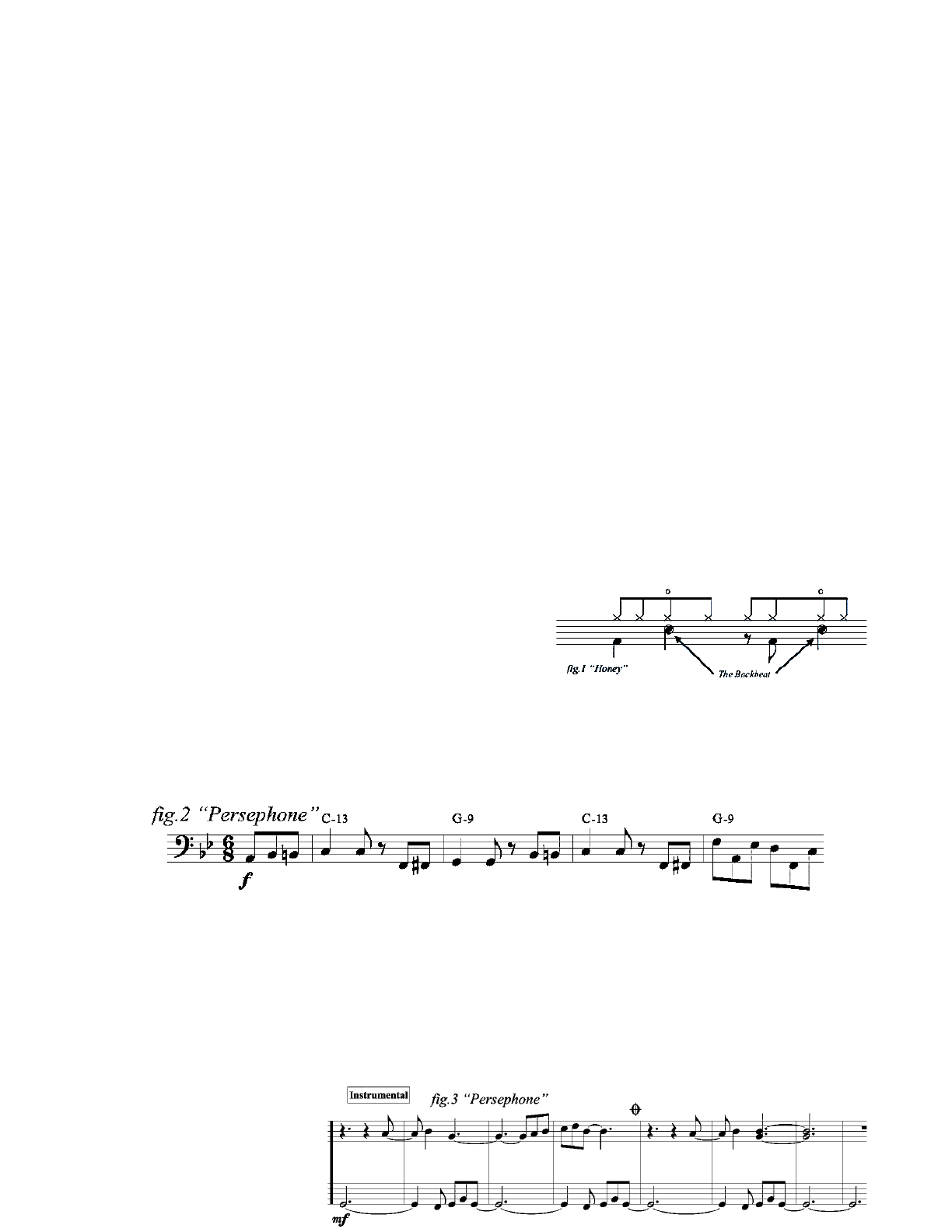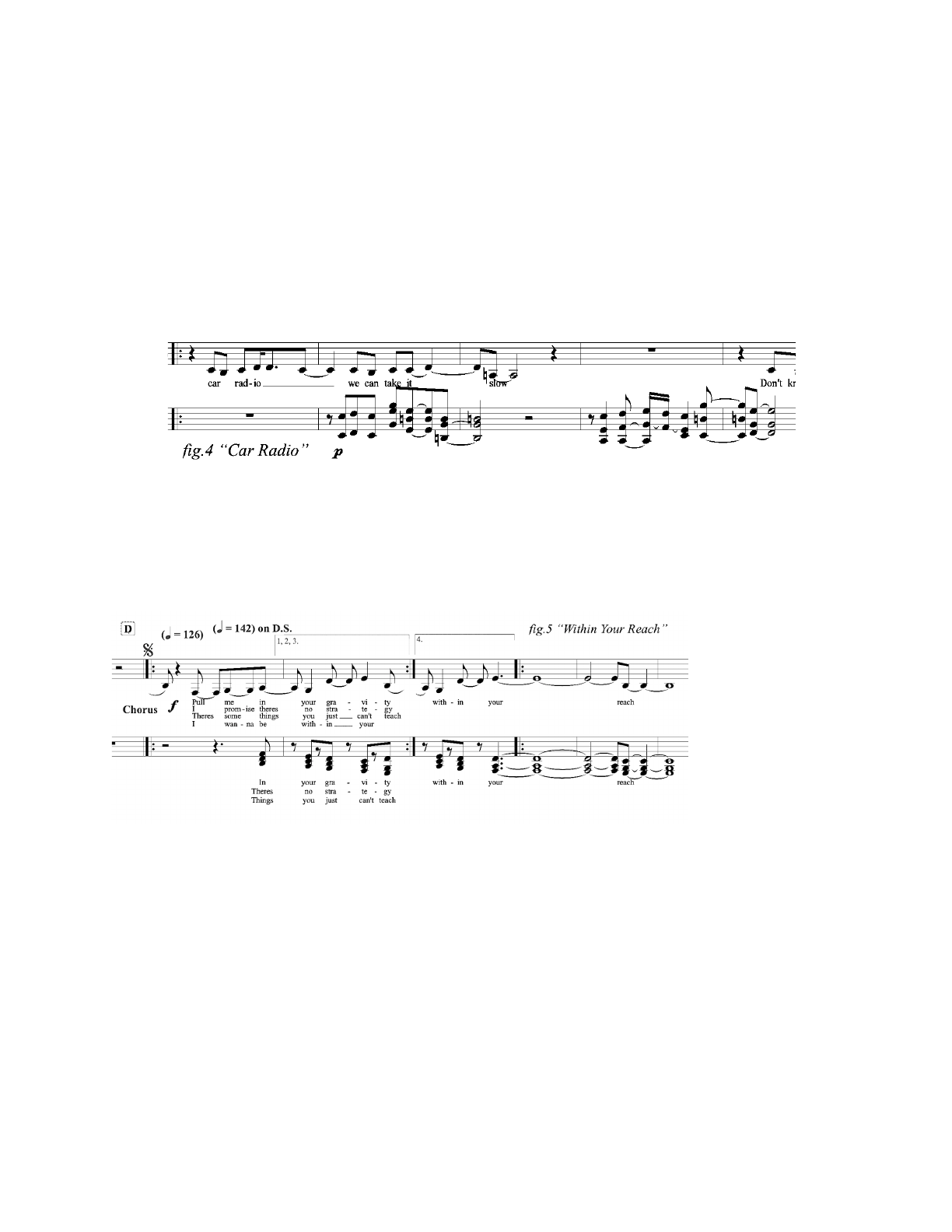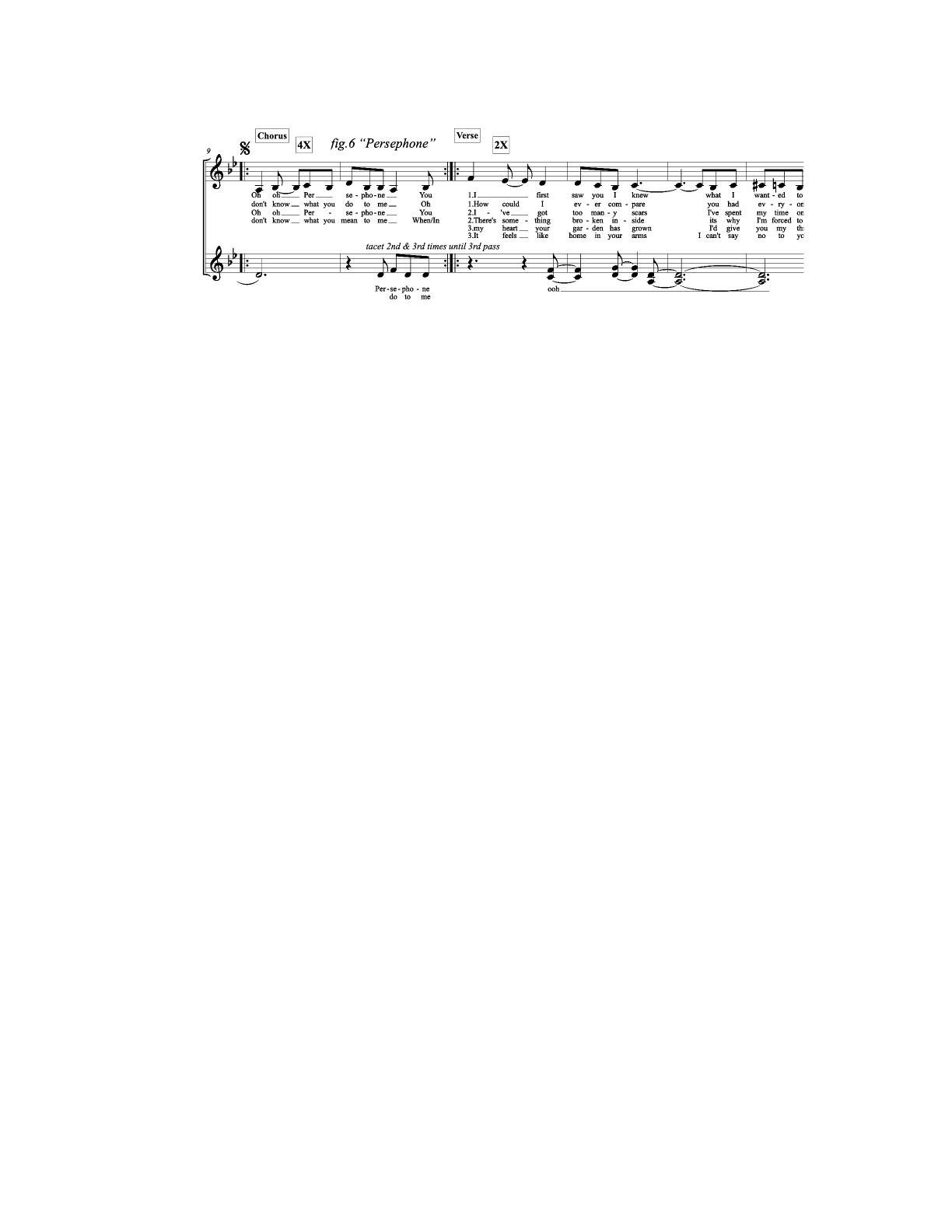
Portland State University Portland State University
PDXScholar PDXScholar
University Honors Theses University Honors College
Spring 6-10-2022
Honey TreeHoney Tree
: A Neo-Soul Album, Artist & Musical : A Neo-Soul Album, Artist & Musical
Development Through the Electronic Press Kit Development Through the Electronic Press Kit
Raine Welterlen
Portland State University
Follow this and additional works at: https://pdxscholar.library.pdx.edu/honorstheses
Part of the Music Business Commons
Let us know how access to this document bene>ts you.
Recommended Citation Recommended Citation
Welterlen, Raine, "
Honey Tree
: A Neo-Soul Album, Artist & Musical Development Through the Electronic
Press Kit" (2022).
University Honors Theses.
Paper 1246.
https://doi.org/10.15760/honors.1277
This Thesis is brought to you for free and open access. It has been accepted for inclusion in University Honors
Theses by an authorized administrator of PDXScholar. Please contact us if we can make this document more
accessible: [email protected].

Honey Tree: A Neo-Soul Album
Artist & Musical Development Through the Electronic Press Kit
by
Raine Welterlen
An undergraduate honors thesis submitted in partial fulfillment of the
requirements for the degree of
Bachelor of Arts
in
University Honors
and
Music Performance
Thesis Adviser
Sherry Alves
Portland State University
2022

Welterlen 1
Introduction
Throughout my academic career I have become increasingly involved in the jazz idiom
and realized early on that all the music I love is heavily influenced by Black American music.
The goal of my education has been to understand jazz well enough for these influences to
become apparent in my original music. This is the creative challenge I set before myself; to write
and arrange a Neo-Soul album I have decided to call, Honey Tree . Writing and recording an
album is not enough to make a finished product by music industry standards. It is no longer a
realistic plan to continue to play in dive bars, hoping to be discovered by an A&R person and get
signed to their label. These days a musician is expected to be able to market themselves in order
to grow an audience before a record label will even look their way. The purpose of this creative
thesis is to assemble a comprehensive Electronic Press Kit (EPK) that will help kickstart my
career as a musician. In my artist’s statement I discuss the methodology of monetizing my music,
setting up marketing, producing and recording the music, and how this process has helped me
grow.
Copyrighting Music
While producing this album and developing my Electronic Press Kit, I obtained the legal
rights to the music as well as access to the money it might generate. There are two important
steps to this: copyrighting the music, and registering with a Performance Rights Organization
(PRO). Copyrighting music is a relatively simple process, but requires a written or recorded
transcription of the music. I chose to make sheet music that included the chord progressions,
melody, and lyrics. Once completed I filled out an online form with the U.S. Copyright office,

Welterlen 2
paid an $80 processing fee, and waited for their verdict. It only took a couple of months to
receive confirmation and certificate in the mail.
Performance Rights Organization
Deciding what PRO to register with is one that needs some deliberation, as it is an
arduous process to switch from one to another. A PRO is a non-profit organization that collects
royalties on behalf of songwriters and publishers when their music is performed or broadcasted
publicly. Because the profits are split evenly between the two entities and distributed, many
songwriters form their own publishing company so that they receive one hundred percent of the
profits. This process only requires registering as both entities with the PRO.
There are three different PROs in the U.S.: ASCAP, BMI, and SESAC. SESAC is by
invitation alone, but the other two only require a one time fee to join. To decide between the two
I took multiple things into consideration, such as price, potential benefits, and ease of use. I
decided to go with ASCAP as they charge fifty dollars to join as each entity, but BMI charges
fifty dollars to register as a writer and an additional one hundred dollars to register as a
publishing company. ASCAP also offers more benefits and is more equipped to receive royalties
from PRO companies overseas. The process of joining ASCAP was just as easy as getting the
music copyrighted, but the work of doing research and coming to a decision took some time.
Electronic Press Kit
While registering with a PRO is important, it will operate in the background now that it is
set up. However, the Electronic Press Kit I have been developing will be put to use everytime I
try to get a job as a performer. The higher quality the materials, the more likely I will be to get

Welterlen 3
work. To break it down, an EPK is a pre-packaged set of materials meant to promote a person or
company, and it can be used for promotional material for the media. In the music industry it is
usually used to show a venue or event planner what your musical performance is like, and
provide the materials needed to promote your show through websites and social media. The
components of an EPK are a biography, footage of performances, branding, headshots, and
studio recordings (Beeching 142).
My EPK materials are presented on a website I built at the beginning of spring term. My
biography was the last page to be published, as it is challenging to write about yourself in the
third person, especially when trying to sell something. With some help from friends and family I
found ways to describe my music and my sound in a complementary way. On my website I have
a few YouTube videos of me singing and playing in my room, but I am lacking high quality
footage of my past performances. So, I am going to live stream my senior recital at the end of the
term. I work for Left Door Streaming Company as an audio engineer, and most of the work I get
is at The 1905, a jazz club in North Portland. This is where I’ll be having my senior recital.
There I will perform seven jazz compositions and five original songs. Having videos of these
performances will make it easier to get work at other venues with both my jazz sets and my
original neo-soul songs.
Branding
All of the elements in an EPK should also convey the branding developed by the business
entity; this includes certain colors, fonts, and editing style for photos and videos. It is more
sustainable to use branding that I already like, so I chose the colors plum and golden yellow for
the theme of my website. I also commissioned my roommate, Em Rochlin, who is also

Welterlen 4
presenting their thesis this term, to design a logo for me that encapsulates my most recognizable
features. I based the fonts on my website and on my business cards off of their handwriting in the
logo and I based my domain name off of my social media usernames and currently own
reginarainemusic.com. Having these branding choices already made will streamline the process
of building promotional materials like posters, stickers, and social media posts. My advisor and I
also discussed how to go about using these materials effectively. Physical posters and social
media are not the most effective way to reach an audience as both of these platforms are highly
competitive. The best way to reach people is through their email. My advisor suggested that I
email all my friends, family, colleagues and professors inviting them to either the live-stream, or
the in-person show, so I can start building my email list now.
Influences & Inspiration
Now that I have these structures in place to market my music, I need to turn my music
into a product. The first step of this process is to share the music with other musicians and start
collaborating towards a full arrangement. This stage of the process is a very vulnerable one
because it is as if you are letting someone else hold your baby for the very first time. I chose to
give myself some protection from this by writing out most of the arrangement on my own. I want
my songs to be included in the neo-soul genre, so I did some research on its influences and
development using the book, Popular Music in America: The Beat Goes On by Michael
Campbell. In this book he tells the history of popular music and how different genres influenced
one another, developing into the music we listen to today.
This genre is heavily influenced by jazz vocalists like Billie Holiday, Sarah Vaughan, Nat
King Cole, and Frank Sinatra, who were singing jazz standards from the Great American

Welterlen 5
Songbook, starting in the 1930s up until the 1960s. They interpreted the music with a
conversational style that would focus on conveying emotion rather than displaying virtuosity
(Campbell, 73). These crooners were influenced by Black gospel singers who used blues and
expressive melismas to add more expression to their impassioned spiritual music (Campbell,
103). Musical artists originating from the U.K., Rex Orange County, Lianne La Havas, and
Eloise are singer-songwriters I listen to regularly who are also inspired by the crooners of the
60’s, and use the same style of storytelling and personalization in their music.
They also use similar arrangement choices as soul singers from the 60s, such as Sam
Cooke and Aretha Franklin who would write songs with more open, syncopated rhythms over a
strong backbeat, which is identified by a snare hit on beats two and four (Cambell,103). In figure
1 you can see an example from my song “Honey” where the kick drum (bottom note) hits on beat
one, and the snare (middle note) hits on beats two and
four. Rex Orange County and the American indie rock
band, Hellogoodbye, also use this genre’s more active
bass line. In the example seen in figure 2 from my composition “Persephone,” you can see the
bass line has bigger intervals over a shorter amount of time in the last measure.
Another genre that heavily influences Neo-Soul is the Detroit born Motown Sound.
Artists and producers did not limit the melody to just the lead vocals and made arrangements that
gave horn players melodic riffs as well (Campbell, 215). Rex Orange County and the
instrumental band, The Olympians, utilize Motown-style melodies in the lead and supporting
horns sections. The

Welterlen 6
melody of “Persephone,” in figure 3, is briefly taken over by the trumpet. In “Car Radio,” the
horn section fills in breaks in the lead vocals during the chorus and verse with harmonized
melodic content (figure 4).
Background vocalists have always been an important part of Black American music and
are used by artists in many genres. One of my earlier musical influences, Hozier, a solo artist
from Ireland, uses blues forms and style as well as gospel influenced background vocals. There
are background vocals in all of my arrangements. As seen in figure 5 the backup vocals in my
song “Within Your Reach” are independent from the lead vocals, providing harmonic and
rhythmic accents.
In “Persephone,”
you can see in
figure 6 how the
back up vocals
echo the lead, and
then switch to haunting “oohs” during the verse that resemble background vocals used by Hozier.

Welterlen 7
Demos
To create the sheet music, I worked from my home studio setup, switching back and forth
between two computer programs: Logic Pro and Finale. I started with Logic Pro, which is a
Digital Audio Workstation (DAW), to create a basic recording of the song using the piano or
ukulele. From there the process was slightly different with each song. For example, when I
started working on “Car Radio,” I wrote the bass line of each section first. But when I started
writing “Honey,” I had a specific idea for background vocals I wanted to use. I would move
section by section, building in each instrument, experimenting with new ideas and fine tuning
existing ones. If I felt stuck I would listen to a playlist of songs to find inspiration, that included
music by the artists mentioned above. The composition “Pluto” by The Olympians, helped
inspire my song, “Persephone,” so I used a small riff from its bassline. It is a three eighth note
chromatic motion leading to the root of the first chord, as seen in the pick-up measure in figure 2.
However, my song is in a different key and time signature so it isn’t similar enough to be
considered copyright infringement.
Notation
As the demos started to come together I would start using the music notation software,
Finale, to begin the most tedious part of this project. This was making sheet music for a band to

Welterlen 8
read. Using the notation tool Logic Pro provides, I would copy the notes into Finale and fine tune
the rhythm. However, the formatting needed to make sheet music readable and clear, takes much
more trial and error. Rehearsal marks, dynamics, spacing, fonts, and notation style are all big
components of this. Even with computer software, notating music can be finicky at best, and
straight up infuriating at worst. My advisor and I went through three rounds of review, but there
were still mistakes to be found when I first brought it to my band.
Rehearsal
I met both my bass player and keyboardist through a jazz ensemble at PSU. The bassist,
John Blewster, is a Sophomore earning a degree in Computer Science; and Marvin Maderang,
also a Sophomore, plays piano part-time in the Jazz Studies Department. I asked PSU jazz
department alumni, and old co-worker at Left Door Streaming, Kyle Owens, to play drums. I
started out rehearsals with just Marvin and John, as I had trouble finding a drummer at first. The
time it took to find a drummer ended up being beneficial, as the students got some extra time to
practice the songs before I brought the professional drummer in.
The first few rehearsals were reading sessions where we would talk over the form and the
general vibe of each song. We played each song twice and there was measurable improvement
between each runthrough. As we went along I would hear my mistakes in the chart and I would
stop them and have them write in corrections. In the next few rehearsals, details of the
arrangements started to change as they brought new rhythmic and harmonic ideas, as well as
their own virtuosity to the music. Despite the amount of work I put into the sheet music I knew
that the right musicians would use them as a starting point, rather than settle for playing them

Welterlen 9
perfectly. I don’t play these instruments, so as they learned the music they interpreted and
improved the individual parts, making the overall arrangement stronger.
Recording
For the recording process I asked another co-worker from Left Door Streaming, Scott
Stanley, to be the engineer for the album. He owns and operates The Studio of the Woodland
Realm in Northeast Portland near the Lloyd district. We decided to do a live recording where the
musicians play at the same time and are able to interact with one another, rather than record each
instrument individually. We reserved two full days in the Hallowed Halls, a studio in South East
Portland that has enough room for everyone to record in the same room. Much of the first day
was eaten up by set-up, and despite some technical issues with our headphone mixes, we had a
few takes of each song done by that evening. However, the takes from the next day were much
higher energy, as everyone was more comfortable with the space and had plenty of time to get in
the right head space. The result is that most of the takes we are using moving forward are from
the second day of recording.
There were a lot of scheduling conflicts so we weren't able to book the studio at
Hallowed Halls until week seven of spring term of this year. It was great to have extra time to
rehearse before going into the studio. Given how early the symposium is this term and how busy
I am preparing for my senior recital and graduation, I decided to take my time on the project.
Rushing through the overdubs and mixing process while I am in the most stressful time of my
life so far would damage the quality of the end product. So once things have settled down I will
finish lead and background vocals as well as any trumpet or ukulele overdubs I want to do in
Scott’s studio. Then, he can start the process of editing and mastering the music, which gives the

Welterlen 10
album consistency and prepares it for public platforms. Once it is ready, I will release it using a
distribution company like CDbaby, to get it on apps like Spotify, Apple Music, and TikTok. At
the same time, I will be putting my EPK to work getting jobs at local music venues, posting to
social media and possibly even getting coverage in local music magazines like Willamette Week
and Vortex .
Conclusion
While in the midst of this creative thesis I realized that I will not need to transcribe such
extensive arrangements in the future. When working with the right musicians they will know
how to emulate the style you want if you trust them and your ability to communicate.
Micromanaging the arrangement has helped me improve my confidence and communication
skills in relation to music, and has shown me the parts of my musicianship I want to improve. I
have also discovered some things about the management role. Waiting for everyone to confirm
their availability will take too long and the opportunity to book a space will pass. I had also
planned to start curating my social media presence during this year, but it is difficult to get
started and be consistent when juggling so many other things.
The plan for my honors thesis changed many times over this past year because I wanted it
to resemble the work I will do in my professional career. I couldn’t see the purpose of writing a
research paper when it is unlikely that I will ever need those skills. I wanted to learn about the
process of recording an album, and once I started, I knew the project would not feel complete
without setting up the business side of things as well. Now, as I enter a new chapter of my career,
I have already built a website, designed marketing materials, obtained the copyrights to my

Welterlen 11
music, made musical arrangements, and collaborated with other musicians towards the
foundations of my first album. All of this will result in a senior recital and live stream that will
be held at a reputable jazz club on June 8th, 2022 at 5:00 PM PST. While there is still more to
learn and do, I have a strong foundation to push off from as I end my formal education, and
begin a professional career in the music industry.

Welterlen 12
Appendix
Link to Album: [To be added in 7/22]
Live Stream: [To be added in 6/22]
Link to Website: https://www.reginarainemusic.com/
Car Radio Rehearsal Example: https://youtu.be/WqLlhUYtg_g
Car Radio Demo: https://soundcloud.com/raine-regina/car-radio
Bibliography
Beeching, Angela Myles. Beyond Talent: Creating a Successful Career in Music . Oxford
University Press, 2020.
Campbell, Michael. Popular Music in America: The Beat Goes On . Schirmer Cengage Learning,
2013.
Pattison, Pat. Writing Better Lyrics: The Essential Guide to Powerful Songwriting . Second ed.,
Writer's Digest Books, 2009.
Corozine, Vince. Arranging Music for the Real World: Classical and Commercial Aspects . Mel
Bay, 2002.
Levine, Mark. The Jazz Piano Book . Cher Music, 1989.
DISCOGRAPHY
Eloise. Somewhere in-Between. Harbor Artists & Music. HRL005V. Vinyl, EP. Recorded
2021.
Hellogoodbye. S’only Natural. Wasted Summer. WS-02. LP, Album. Recorded 2018.
Hozier. Hozier. Rubyworks and Columbia. 88843099961. Vinyl, LP, Album. Recorded
2014.
La Havas, Lianne. Blood. Nonesuch. 550000-2. Album, CD. Recorded 2015.
Rex Orange County. Apricot Princess. AP001LP. Vinyl, LP, Album. Recorded 2018.
The Olympians. The Olympians . Daptone Records. DAP-044. CD, Album. Recorded
2016.
